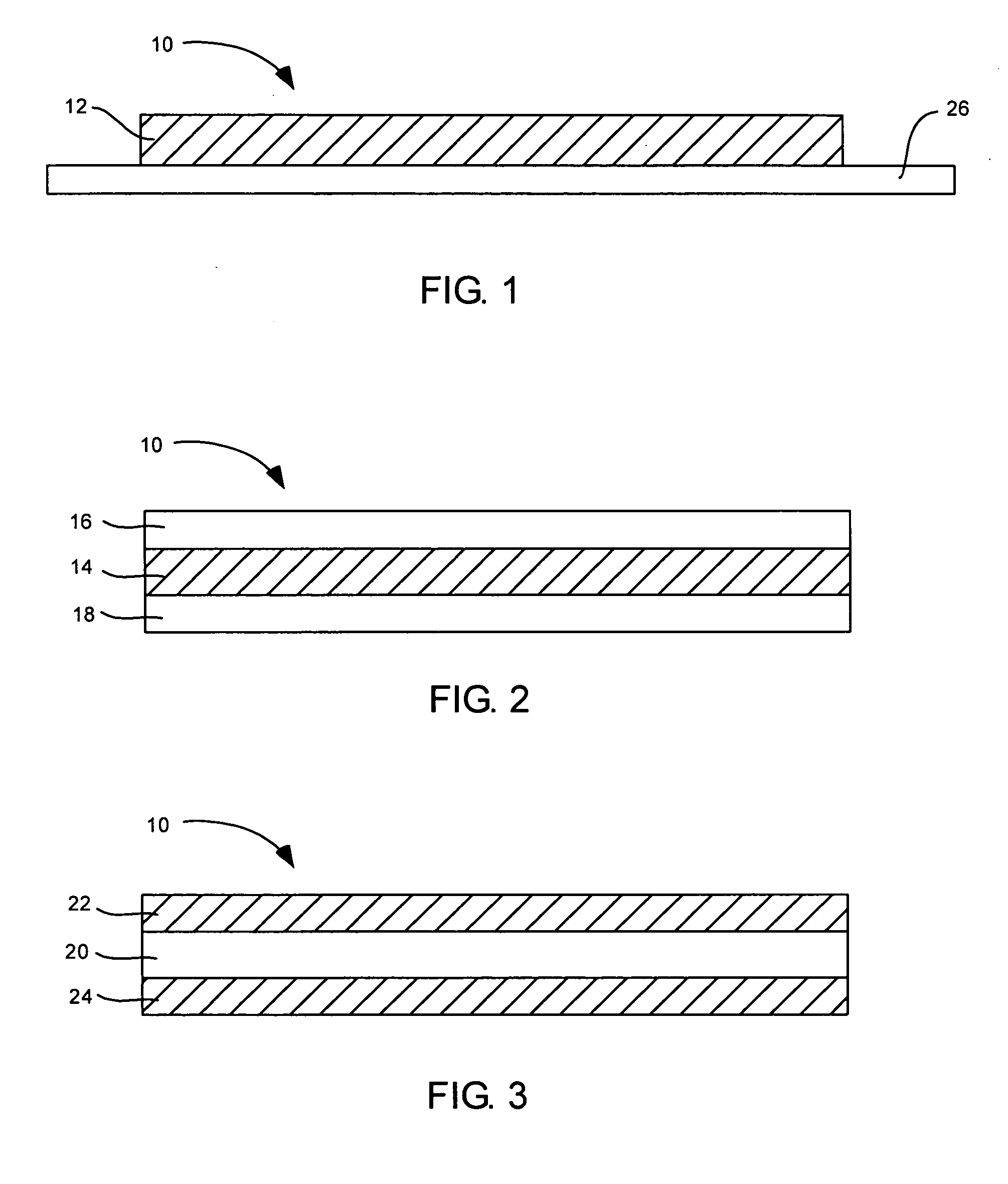Graphite composite thermal sealants and associated methods
a graphite composite and thermal sealant technology, applied in the field of sealants and materials, can solve the problems of heat dissipation, loss of chip function, neglected design phase, etc., and achieve the effect of high degree of graphitization
- Summary
- Abstract
- Description
- Claims
- Application Information
AI Technical Summary
Benefits of technology
Problems solved by technology
Method used
Image
Examples
example
[0065] Graphite powder having a high degree of graphitization was secured from Morgan Specialty Graphite (purified natural graphite). A mold having an adjustable recess depth is provided. The mold has a 50 mm diameter and is adjusted to a 0.1 mm depth which is filled with the graphite powder. The bottom of the mold is then adjusted an additional 0.2 mm in depth (total 0.3 mm). An undersized 0.1 mm thick indium disk is placed on the graphite powder followed by filling the remaining space with additional graphite powder. The powder assembly is then placed in a high pressure apparatus and pressed to about 250 MPa. During pressing, the temperature of the assembly is raised to about 100° C., which is sufficient to cause adherence of the graphite to the indium disk and at least partial consolidation of the graphite powder. Indium has a melting temperature of about 156.6° C. and may oxidize slowly in the presence of air. The pressing process can be performed in a non-oxidizing atmosphere; ...
PUM
| Property | Measurement | Unit |
|---|---|---|
| thickness | aaaaa | aaaaa |
| vol % | aaaaa | aaaaa |
| vol % | aaaaa | aaaaa |
Abstract
Description
Claims
Application Information
 Login to View More
Login to View More - R&D
- Intellectual Property
- Life Sciences
- Materials
- Tech Scout
- Unparalleled Data Quality
- Higher Quality Content
- 60% Fewer Hallucinations
Browse by: Latest US Patents, China's latest patents, Technical Efficacy Thesaurus, Application Domain, Technology Topic, Popular Technical Reports.
© 2025 PatSnap. All rights reserved.Legal|Privacy policy|Modern Slavery Act Transparency Statement|Sitemap|About US| Contact US: help@patsnap.com


